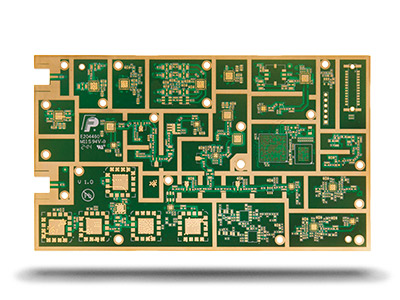Technical measures to improve the reliability of PCB board equipment: scheme selection, circuit design, circuit board design, structural design, component selection, production process, etc., the specific measures are as follows:

(1) Simplified scheme design
When designing the scheme, on the premise of ensuring that the equipment meets the technical and performance indicators, the design should be simplified as much as possible, and the circuit and structural design should be simplified, so that each component is a simple design. The popular modular design method in the world today is an effective measure to improve equipment reliability. The block function is relatively single, and the system is composed of modules, which can reduce the complexity of the design and standardize and standardize the design. A large number of facts at home and abroad have proved this, and the product design should adopt a modular design method.
(2) Using modules and standard parts
Modules and standard components are proven products with high reliability after extensive testing and extensive use, which can fully eliminate equipment defects and hidden dangers, and facilitate replacement and repair after problems occur. The use of modules and standardized products can not only effectively improve the reliability of the equipment, but also greatly shorten the development cycle, providing extremely favorable conditions for the rapid modification and installation of the equipment.
(3) Improve integration
Various large-scale and ultra-large-scale integrated circuits with strong functions and high integration are selected to minimize the number of components. The fewer components there are, the less potential there are for hidden dangers. In this way, not only can the reliability of the equipment be improved, but also. It can shorten the research and development cycle.
(4) Derating design
The derating design means that the components work under the conditions of lower than their rated stress, which is an effective method to reduce the failure rate of components. The temperature characteristics and electrical characteristics parameters are all derated to reduce the failure rate of components under various stress conditions. In the derating design, the factors to be considered by different components are different: some are voltage range, some are current size, some are temperature, some are frequency, some are vibration and so on. In general, the withstand voltage, frequency and temperature characteristics of capacitors, the power of resistors, the current and frequency characteristics of inductors, the junction current, junction temperature or The fan-out coefficient, the voltage/current and temperature resistance performance of the switch of the power supply and the main power supply cable, the frequency characteristics of the signal cable, and the use of radiators, connectors, module power supplies, etc., require derating design .
(5) Select high-quality PCB board components
Components are the basic components of equipment, and their quality will directly affect the reliability of equipment. Military communication equipment should use industrial-grade or above products as far as possible, which are military products, and undergo strict aging screening before being put on the machine to eliminate early failure devices.
(6) Make full use of software resources
Due to the flexibility of software programming, software resources should be fully utilized in the design. At present, there are relatively many debugging methods and tools for software, and it is easy to locate faults and design problems, and the solution cycle is relatively short. Making full use of software resources is an important method to improve reliability.
(7) Reliable structure, mature and advanced technology
In circuit and structural design, the number of connectors and metallized holes should be minimized. Circuit components and chips should be soldered directly on the printed board as much as possible. Surface mount devices should be selected and surface mount technology should be used to avoid poor contact. , to ensure the reliability of the equipment.
(8) Thermal design
Excessive temperature is one of the important factors that reduce the performance and reliability of the equipment. For this reason, thermal protection measures should be taken to control and reduce the temperature rise of the equipment during operation, ensure good heat dissipation, and improve the thermal reliability of the equipment. Too low temperature will also reduce equipment performance and reliability, and some components cannot work normally when the ambient temperature is too low. Therefore, the equipment used in the low temperature environment should also be tested at low temperature. The temperature conditions and environment in which the equipment operates must be considered in the design.
(9) Electromagnetic compatibility design.
When the equipment is working, it will be interfered by many electromagnetic fields, both natural and man-made. This is especially true of military equipment. In modern high-tech electronic warfare, a very important technical means is to locally emit high-energy electromagnetic waves to destroy the components in the opponent's equipment, thereby causing the equipment to fail. Therefore, effective anti-interference measures such as shielding and filtering should be taken to prevent the interference of noise and interfering electromagnetic fields on the equipment and ensure the reliable operation of the equipment.
(10) Anti-vibration shock design.
Equipment will be affected by various vibrations and impacts during use and transportation, which will affect its reliability. For this reason, the mechanical strength and rigidity of the equipment should be improved, and vibration damping and buffering measures should be taken to strengthen the equipment against vibration and impact. ability to improve equipment reliability.
(11) Use a fault indicating device.
Design a fault detection circuit and a fault alarm device to find faults in time, thereby shortening the troubleshooting time of the equipment.
(12) Simple operation and convenient maintenance.
The function of operation and maintenance in the equipment is one of the main factors to ensure the reliability of the equipment. In the design, plug-in units and modules should be used as much as possible, and at the same time, modularization, standardized structure and quick disassembly structure should be adopted to facilitate operation and maintenance. Facts have proved that the modular structure of the equipment can greatly simplify the operation and facilitate maintenance on PCB board.